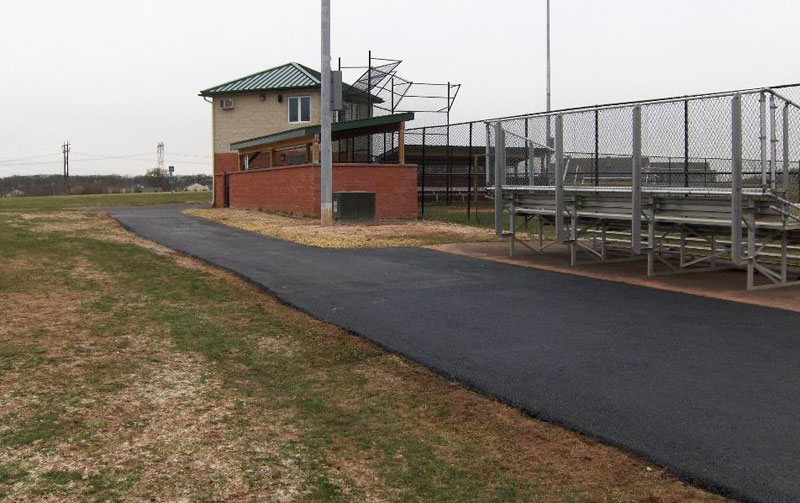How A1 Professional Asphalt & Sealing Llc can Save You Time, Stress, and Money.
How A1 Professional Asphalt & Sealing Llc can Save You Time, Stress, and Money.
Blog Article
The A1 Professional Asphalt & Sealing Llc Diaries
Table of ContentsA1 Professional Asphalt & Sealing Llc for DummiesThe Ultimate Guide To A1 Professional Asphalt & Sealing LlcThe Ultimate Guide To A1 Professional Asphalt & Sealing LlcA1 Professional Asphalt & Sealing Llc Fundamentals ExplainedAn Unbiased View of A1 Professional Asphalt & Sealing Llc

The oil in an automobile engine is not simply oil. The REOB consists of all the additives that were in the waste oil as well as the wear steels from the engine (primarily iron and copper).
However, by making lots of blends making use of different REOB samples and various asphalt binders, the variations mainly can be averaged out. Several States supplied samples of recognized REOB make-up to TFHRC scientists, who assessed the examples to contrast the percent of included (recognized) REOB to the found (evaluated) amount. The analyses showed a comparable percentage of added and found REOB.
Getting The A1 Professional Asphalt & Sealing Llc To Work
None of those States understood that the asphalt they were getting included REOB. One State insisted its samples had no REOB - https://padlet.com/a1asphaltsealng/my-stellar-padlet-8k4iv5oxbxezxc6c.
Of the 1,532 samples checked, 12 percent had REOB, and some consisted of significantly high degrees of it at 1020 percent. The greatest degree was 34 percent in a sample from Texas, which TxDOT had made use of in a patching substance. This testing also exposed the existence of phosphoric acid in 11 percent of the samples, and 2 percent had ground tire rubber.
2 years back at TRB's annual meeting, the Federal researchers held an REOB workshop and provided the findings of their research laboratory examinations to a standing room-only group. Although some agencies do not especially prohibit REOB, they do impose physical examinations that preclude its useeffectively a restriction. asphalt sealcoating in st louis. Others do not prohibit it by spec, but have arrangements with asphalt providers to avoid the usage of REOB
Excitement About A1 Professional Asphalt & Sealing Llc
A handful do permit REOB, some within particular limitations. Ohio and Texas restriction degrees to much less than 5 percent of the asphalt. To develop a dependable test technique that all States can make use of, the TFHRC researchers set up a round-robin test plan. The individuals are 11 State freeway companies (Illinois, Massachusetts, Minnesota, Mississippi, Montana, North Carolina, Oklahoma, South Carolina, Texas, Vermont, and Wyoming), 2 independent screening laboratories, the Ministry of Transportation in Ontario, Queen's College in Ontario, and an Ontario paving specialist.
In total, the scientists prepared and shipped 720 blends. The participants are evaluating the samples individually making use of the standards provided by the TFHRC researchers. The round-robin screening is virtually finished, and TFHRC remains in the process of accumulating the results. The output will be a recommended AASHTO test method that any kind of State can adopt and utilize (a1 asphalt).
The sidewalk with REOB, which is situated 0.6 mile (1 kilometer) from the sidewalk without REOB, has the same subgrade, web traffic density, and climate. However, the segment of Highway655 with 5 to 10 percent REOB showed significant breaking. In this example, the presence of REOB was the recognized reason for cracking at a low temperatures.
A section of test sidewalk in Minnesota (MN1-4) discovered to have REOB additionally broke too soon. The sidewalk carried out well for the initial 3 to 4 years, but then began to crack.
The Ultimate Guide To A1 Professional Asphalt & Sealing Llc
The examinations were not considerable, however they revealed that at degrees of 6 percent or more, the tensile stamina of the asphalt went down substantially. At a degree of 3.5 percent REOB, the variation in the physical test methods was more than the impact of REOB. In truth, it was tough for scientists to analyze whether REOB was existing.

One binder criterion taken into consideration is the distinction between the reduced temperature level essential requirements temperature for stiffness (S) in the flexing beam rheometer and the bending beam rheometer creep slope (m-value) noted as Tcritical. Two independent study groups, one from AASHTO and the other from the Asphalt Institute, ended that more research is needed on the usage of REOB in asphalt.
Formerly, all asphalt testing measured design properties such as rigidity. These tests do not reveal what products had actually been added to the asphalt. One sample obtained during the TFHRC research had a very unusual analysis. The sample had the adhering to test outcomes: Superpave PG 64-28 with a high temperature quality of 67.3 Tcritical on the bending light beam rheometer was 6.7 degrees Celsius.

What Does A1 Professional Asphalt & Sealing Llc Mean?
These outcomes show there are weak points in the standardized engineering testing protocols that might be manipulated. The manufacturer might have an economic benefit and the product passes all the standard examinations, however the product may not be beneficial to guaranteeing long-term efficiency. To resolve this problem and the growth of new asphalt additives and extenders, TFHRC is starting a study important link program to utilize portable spectroscopic tools, x-ray fluorescence spectroscopy, and Fourier transform infrared spectroscopy to enable evaluations to be performed in the field as opposed to having to take examples back to the lab.
Report this page